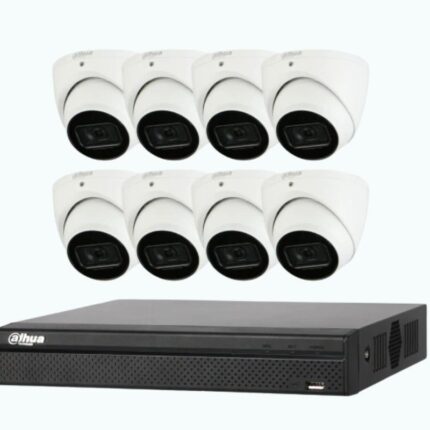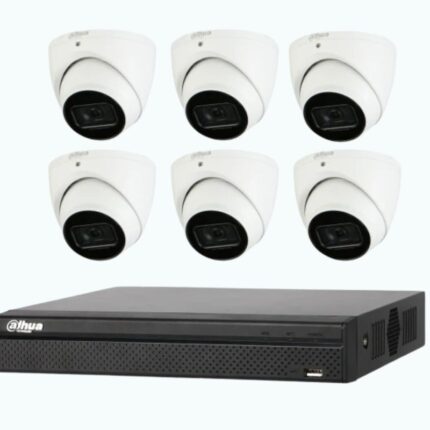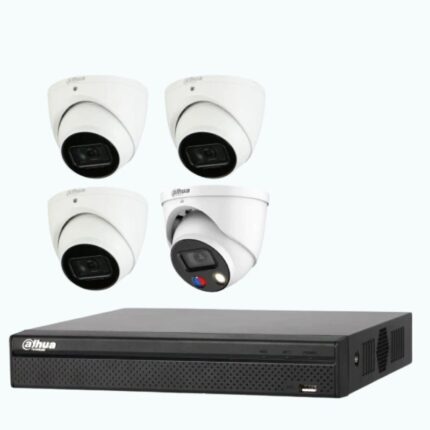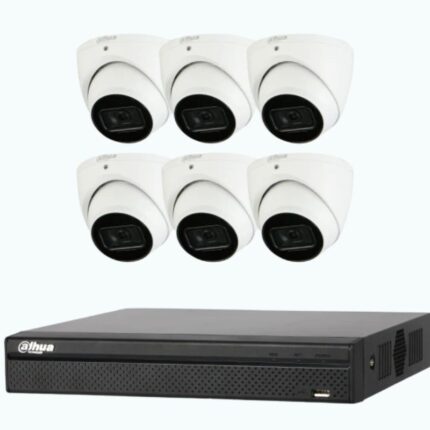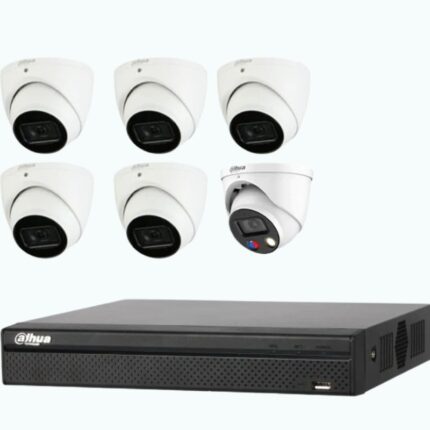Introduction
A well-functioning CCTV system relies on more than just high-quality cameras; the wiring plays an equally crucial role. Proper wiring ensures that video signals are transmitted clearly, power reaches the cameras without interruption, and the entire system remains durable over time. Without the right cables, even the most advanced surveillance setup can suffer from poor performance, interference, and frequent malfunctions. Understanding the importance of wiring and selecting the right cables is key to building a reliable security system. Visit this website to find high-quality security camera cables.
Importance of Proper Wiring in a CCTV Setup
Wiring is the foundation of any CCTV system, determining its efficiency and longevity. Poor wiring can lead to signal disruptions, power failures, and long-term damage to equipment. A well-planned wiring setup ensures that every camera receives stable power and transmits high-quality video without interference. It also reduces the risk of frequent maintenance and repairs, ultimately saving costs and effort. Proper wiring is essential for maintaining the integrity of a surveillance system, ensuring that it functions effectively in all conditions.
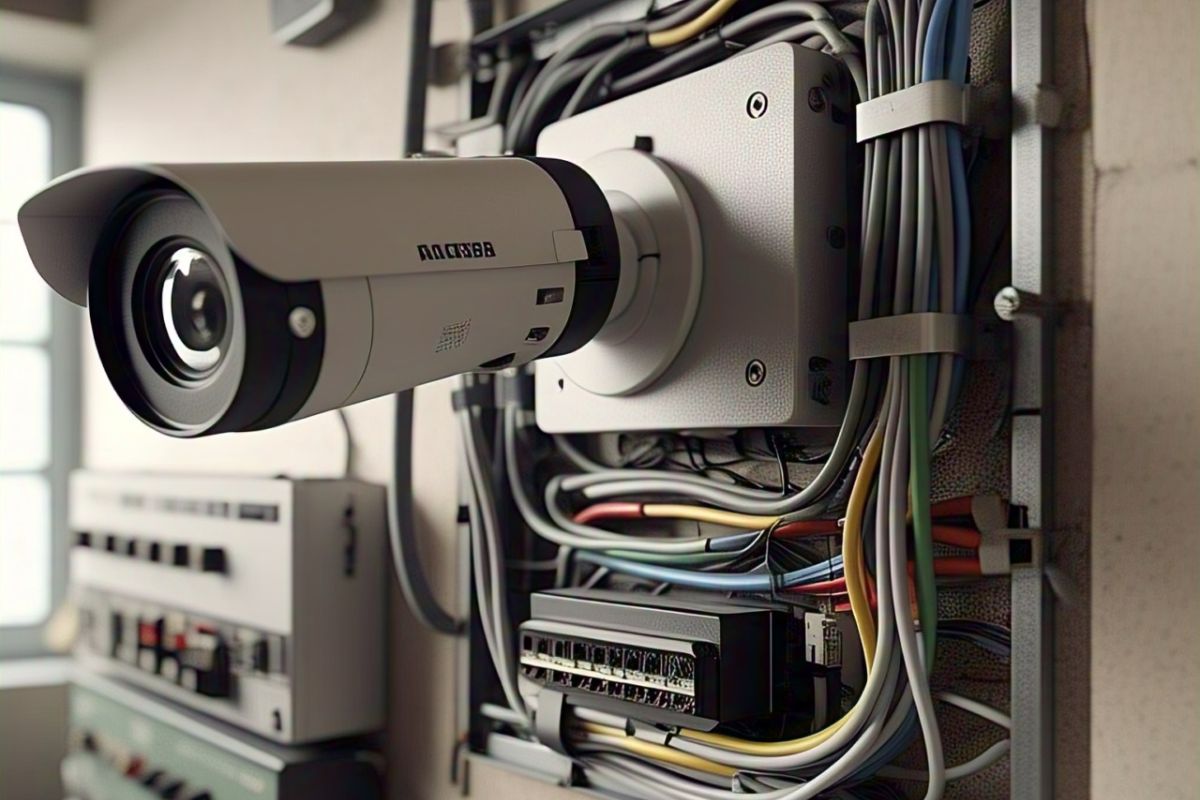
How the Right Cable Choice Affects Video Quality, Power Supply, and Durability
The type of cable used in a CCTV system has a direct impact on its performance. Video quality depends on cables that minimize signal loss and interference, ensuring clear and uninterrupted footage. Power supply cables must be capable of delivering consistent energy to cameras, preventing sudden shutdowns or malfunctions. Durability is another key factor, as outdoor and long-distance installations require cables that can withstand environmental factors like weather, temperature changes, and physical wear. Choosing the right cables helps maintain a stable and long-lasting CCTV setup, reducing issues related to performance and maintenance.
Overview of the Different Types of Cables Used for CCTV Systems
Various types of cables are used in CCTV installations, each serving a specific purpose. Coaxial cables are commonly used for analog systems, providing stable video transmission with minimal interference. Ethernet cables, such as Cat5e and Cat6, are ideal for IP cameras, enabling both data and power transmission through a single line using Power over Ethernet (PoE). Power cables are essential for supplying electricity to cameras, ensuring they operate without interruptions. Selecting the appropriate cable type based on system requirements is crucial for achieving optimal security and efficiency. You can browse different types of CCTV cables at this link.
Recommended products
-
Dahua 8MP Starlight CCTV Kit – 8 Cameras + 8 Channel NVR
$2,300.00 -
Dahua 6MP Starlight CCTV Kit – 6 Cameras + 8 Channel NVR
$1,450.00 -
Dahua 8MP Special 1 CCTV Kit with TIOC – 4 Cameras + 4 Channel NVR
$1,230.00 -
Dahua 8MP Starlight CCTV Kit – 6 Cameras + 8 Channel NVR
$1,800.00 -
Dahua 5MP Special CCTV Kit with TIOC – 6 Cameras + 8 Channel NVR
$1,300.00
Understanding the Role of Wires in CCTV Cameras
Why Cabling Is Crucial for a Stable and Clear Surveillance System
Cabling is the backbone of a reliable CCTV system. It ensures that video signals are transmitted smoothly, providing clear and uninterrupted footage. A poor-quality or incorrectly installed cable can lead to issues like image distortion, signal loss, or video lag. In security surveillance, every second counts, and any interference or drop in video quality can compromise the system’s effectiveness. The right cables help maintain a stable connection, reducing the risk of glitches that could miss critical moments. Proper installation and high-quality materials also protect against external interference, ensuring a consistently clear feed.
The Difference Between Wired and Wireless CCTV Setups
CCTV cameras are available in both wired and wireless configurations, each with distinct advantages and drawbacks. Wired systems rely on physical cables for data and power transmission, offering more stable and high-quality video feeds. These setups are less prone to interference and do not depend on network strength, making them ideal for areas requiring 24/7 surveillance. However, installation can be more complex, requiring careful planning for cable routing.
On the other hand, wireless CCTV systems offer flexibility, as they do not require extensive cabling. They are easier to install and can be relocated with minimal effort. However, they rely on Wi-Fi or other wireless connections, making them susceptible to signal disruptions, bandwidth limitations, and cybersecurity threats. While wireless setups are convenient, they may not always provide the same level of reliability as wired connections, especially in areas with poor network stability.
Factors to Consider When Choosing a CCTV Cable
Selecting the right cable for a CCTV system involves several key factors. The first is distance—longer cable runs can lead to signal degradation if the cable is not designed to handle extended transmission ranges. Different types of cables, such as coaxial and Ethernet, perform differently over varying distances.
Power requirementsare another crucial aspect. Some cables support both data and power transmission, reducing the need for additional wiring. For example, Power over Ethernet (PoE) cables allow cameras to receive power and transmit data through a single connection, simplifying installation and improving efficiency.
Lastly, interference must be considered. External electrical sources, other wiring, and environmental factors can impact video clarity. Proper shielding and insulation in cables help minimize these effects, ensuring smooth and interference-free surveillance. Choosing the right cable based on these factors helps maintain a CCTV system that is both effective and long-lasting.
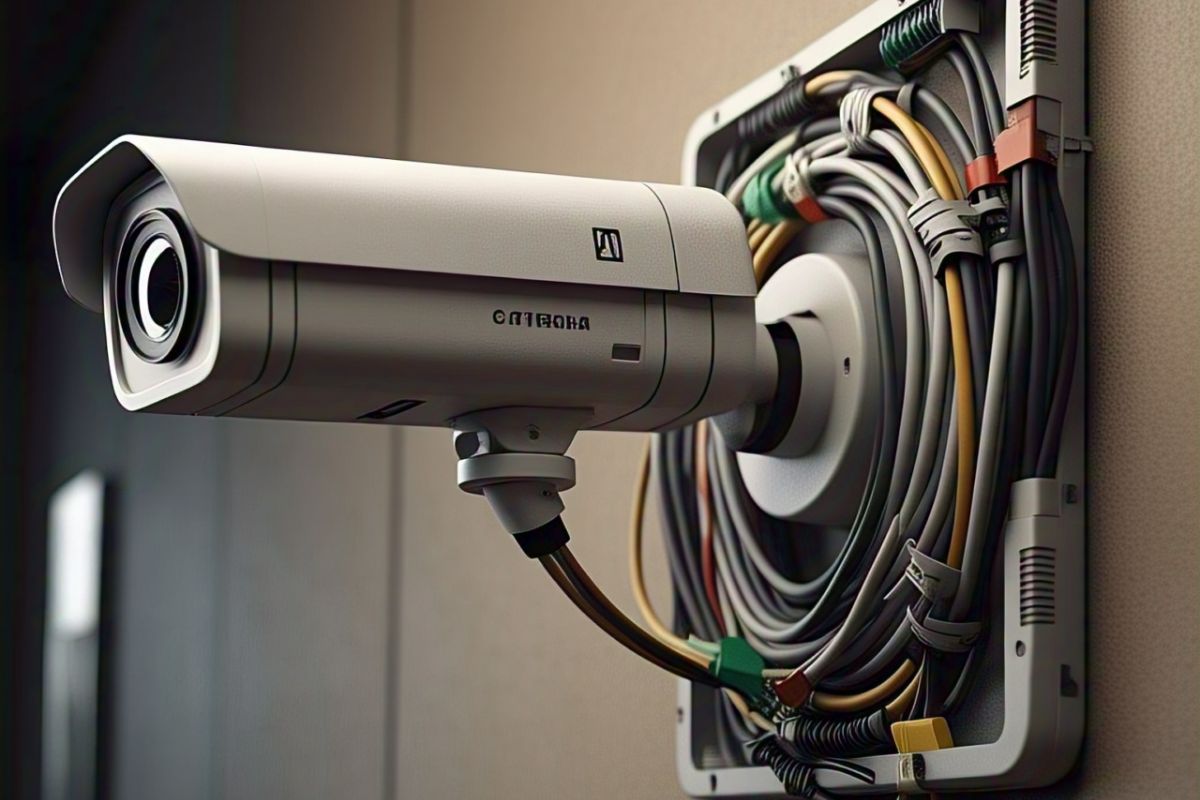
Types of Wires Used in CCTV Systems
Choosing the right type of wire is essential for the efficiency and reliability of a CCTV system. Different cables serve different purposes, whether for transmitting video, data, or power. Understanding these wire types can help ensure a stable and high-quality surveillance setup.
Coaxial Cables (RG59, RG6, RG11)
Coaxial cables are commonly used for analog CCTV systems, providing a reliable connection for transmitting video signals. The three main types—RG59, RG6, and RG11—differ in terms of thickness, signal quality, and transmission distance. RG59 is the most flexible and suitable for short runs, while RG6 offers better shielding for medium distances. RG11, the thickest of the three, is best for long-distance applications but can be harder to install. While coaxial cables provide strong signal protection, they have limitations in bandwidth and are less suitable for modern IP-based systems.
Network Cables (Cat5e, Cat6, Cat7)
Network cables are essential for IP-based CCTV systems, which require high-speed data transmission. These cables not only carry video signals but also support Power over Ethernet (PoE), reducing the need for separate power cables. Cat5e is a basic option with sufficient speed for most surveillance setups, while Cat6 offers improved bandwidth and reduced interference. Cat7 provides even better shielding and performance, making it ideal for high-resolution video and large-scale surveillance networks. The choice of network cable depends on factors such as video quality requirements, distance, and potential interference.
Power Cables (Siamese Cable, 18/2 Power Wire)
Power cables ensure that CCTV cameras receive a consistent and reliable power supply. Siamese cables are a convenient option because they combine both power and video cables in one, simplifying installation. In some cases, separate power cables like 18/2 power wire are used when cameras are installed far from the video recording unit or when specific power configurations are needed. One crucial factor to consider with power cables is voltage drop, which occurs when power weakens over long distances. To prevent this, thicker cables, shorter runs, or PoE solutions may be necessary.
Each type of cable plays a critical role in the overall performance of a CCTV system. Selecting the right wires based on installation needs, distance, and video quality ensures a smooth and efficient security setup.

Choosing the Right Wire for Your CCTV Setup
Selecting the right cable for your CCTV system is crucial for ensuring clear video transmission, minimal interference, and long-term reliability. The type of wire you choose can impact the overall performance of your surveillance system, affecting factors such as image quality, signal stability, and ease of installation. By carefully evaluating your needs, you can make an informed decision that enhances the efficiency of your security setup.
How to Determine the Best Cable for Your Surveillance Needs
The first step in choosing the right cable is understanding your surveillance requirements. Different types of CCTV cameras require different wiring solutions, depending on whether they are analog or IP-based. Analog cameras often use coaxial cables, while IP cameras typically rely on Ethernet cables. Additionally, factors such as power delivery, distance between components, and data transmission speeds play a significant role in selecting the best cable. The goal is to ensure a seamless connection that delivers high-quality video without signal loss or interference.
Factors Affecting Cable Selection
Several factors influence the choice of wire for your CCTV installation. The type of camera you are using is one of the most important considerations—traditional analog cameras need coaxial cables, whereas modern network cameras function best with Ethernet cables. The installation distance also plays a crucial role, as different cables have varying signal transmission limits. If your cameras are placed far from the recording device, you may need signal boosters or high-quality cables to maintain image clarity. Environmental conditions, such as exposure to extreme weather, moisture, or electrical interference, must also be considered. Outdoor installations may require weather-resistant and durable cables, while high-interference areas benefit from shielded cables that protect against signal disruption.
Shielded vs. Unshielded Cables – When Extra Protection Is Necessary
Shielding in cables helps prevent external interference that can degrade signal quality. Unshielded cables work well in environments with minimal electromagnetic interference, such as residential or office settings. However, in industrial areas, near power lines, or where multiple electronic devices operate, shielded cables provide an extra layer of protection. These cables come with a metallic layer that blocks unwanted interference, ensuring stable and clear video transmission. Deciding between shielded and unshielded cables depends on your installation environment and the level of interference your system may encounter.
By carefully evaluating these factors, you can choose the best wiring solution for your CCTV system, ensuring reliable security monitoring and long-term efficiency.

Importance of Proper CCTV Wiring Installation
Proper installation of CCTV wiring is essential for maintaining a reliable and high-quality surveillance system. A well-planned wiring setup minimizes interference, ensures durability, and protects cables from potential damage. Understanding the best practices for running cables, considering indoor and outdoor wiring needs, and implementing protective measures can significantly enhance the performance and lifespan of your security system.
Best Practices for Running Cables to Avoid Interference
One of the key aspects of CCTV wiring installation is avoiding interference. Electrical noise from nearby power lines or electronic devices can disrupt the signal, leading to poor video quality. To prevent this, cables should be routed away from electrical wiring and other sources of electromagnetic interference. Shielded cables and proper grounding techniques also help maintain a stable and clear connection.
Indoor vs. Outdoor Wiring Considerations
Indoor and outdoor wiring each have unique requirements. Indoor wiring is relatively straightforward since cables can be hidden within walls, ceilings, or conduits to maintain a clean appearance and prevent accidental damage. On the other hand, outdoor wiring is exposed to harsh weather conditions, UV rays, and even potential vandalism. To protect outdoor cables, it is essential to use weatherproof conduits, bury cables underground when possible, and secure them properly to prevent exposure to moisture or physical damage.
How to Protect Cables from Damage and Signal Loss
Protecting cables from damage and signal loss is another crucial factor in CCTV installation. Physical wear and tear, rodents, moisture, and environmental elements can all contribute to cable degradation over time. Using durable, high-quality cables, placing them inside protective casings, and applying waterproofing methods can extend the lifespan of the system. Additionally, regular maintenance and inspections help identify potential issues before they affect the security system’s functionality.
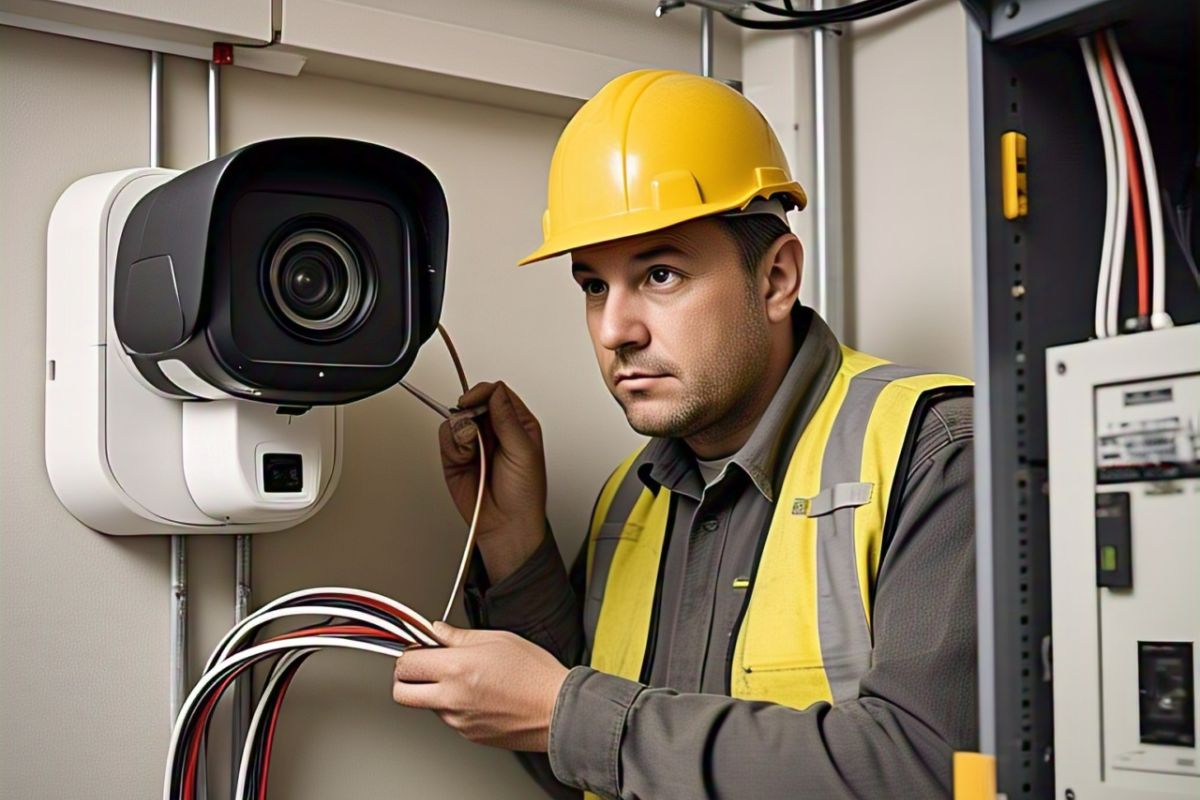
Common Wiring Mistakes to Avoid
Wiring plays a crucial role in the performance of a CCTV system. Even the best cameras can fail to deliver clear footage if the wiring is not done correctly. Many people make common mistakes that can lead to poor video quality, power failures, or even complete system malfunctions. Understanding these mistakes can help ensure a stable and reliable surveillance setup.
Using the Wrong Type of Cable for Your Camera System
Choosing the right cable is essential for a functional CCTV system. Different types of cameras require specific cables for proper signal transmission. Analog cameras typically use coaxial cables, while IP cameras rely on Ethernet cables like Cat5e or Cat6. Using an incorrect cable can result in poor image quality, connectivity issues, or even signal loss. Ensuring compatibility between your camera and the cable type will help maintain a clear and stable video feed.
Ignoring Power Supply Requirements
Power is the backbone of any CCTV system, and ignoring power supply requirements can lead to serious problems. Some cameras operate on direct current (DC), while others use alternating current (AC) or Power over Ethernet (PoE). Using the wrong voltage or an inadequate power source can cause cameras to malfunction or fail entirely. It’s important to check the manufacturer’s specifications and ensure each camera receives the correct power to avoid system failures.
Improper Grounding and Its Impact on Video Quality
Grounding is a crucial but often overlooked aspect of CCTV installation. When cameras are not properly grounded, they can be affected by electrical interference, resulting in distorted video quality, flickering images, or unwanted noise in the footage. In extreme cases, improper grounding can even damage the camera system. Ensuring that the system is correctly grounded helps protect the equipment and maintains stable video performance.
Poor Cable Management Leading to Signal Interference
Messy or unorganized wiring can cause serious signal interference and long-term maintenance issues. When cables are tangled or placed near electrical wiring, they can pick up unwanted electromagnetic signals, leading to degraded video quality. Poorly managed cables are also more prone to wear and tear, which can result in connectivity problems over time. Organizing cables properly, using cable trays, and keeping them away from power lines can help maintain a stable and interference-free connection.
By avoiding these common wiring mistakes, you can ensure that your CCTV system operates efficiently, providing clear and uninterrupted surveillance footage.
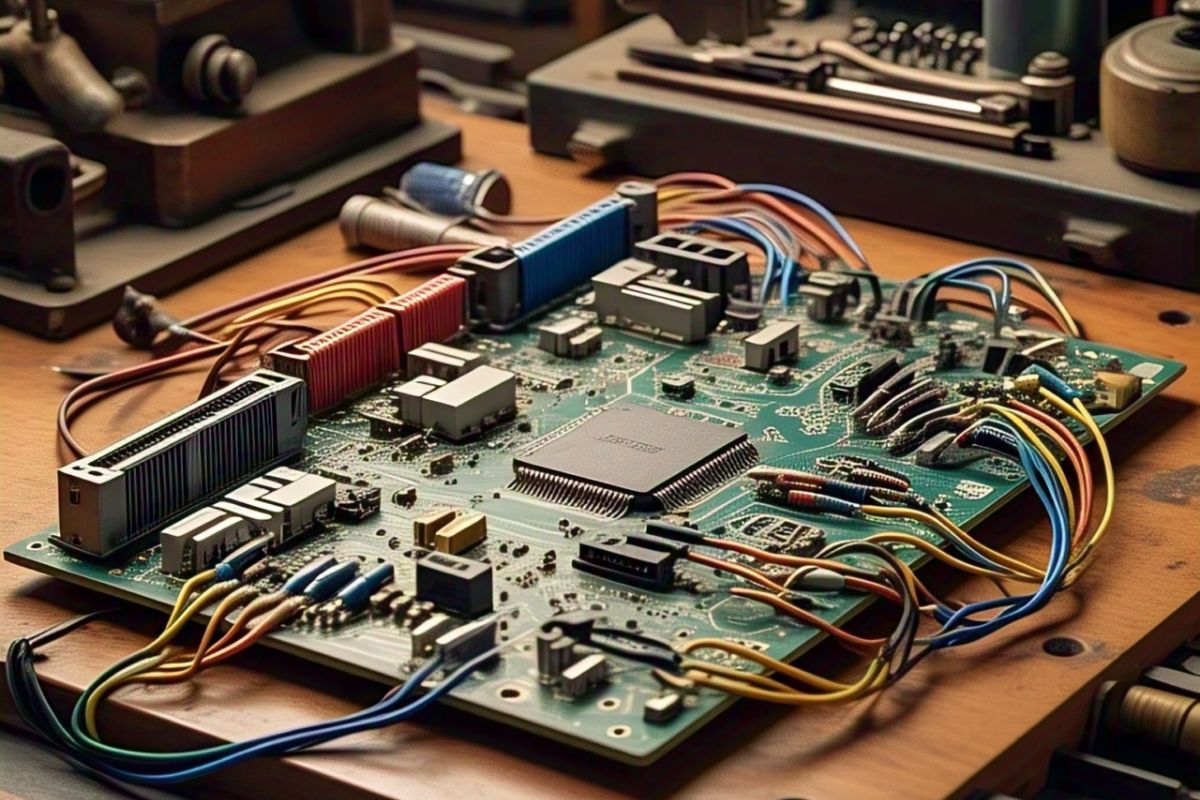
Future-Proofing Your CCTV Wiring
Why Upgrading to High-Quality Cables Matters
The quality of your CCTV cables plays a crucial role in the overall performance and longevity of your surveillance system. High-quality cables ensure a stable video feed, reducing the risk of interference, signal loss, and poor image quality. Cheaper or low-grade cables may work initially, but over time, they can degrade, leading to distorted footage and unreliable security coverage. Investing in premium cables also helps prevent common issues like power fluctuations and electromagnetic interference, which can disrupt video transmission. Whether you’re setting up an analog or IP-based system, choosing the right cables ensures that your cameras operate at their full potential, providing clear and uninterrupted surveillance footage.
The Importance of Planning for Future Camera Additions
Security needs evolve, and your CCTV system should be designed with flexibility in mind. When setting up your wiring infrastructure, it’s essential to consider potential future expansions. Adding new cameras later can be costly and time-consuming if your initial setup doesn’t account for growth. By installing additional cables or opting for higher-capacity wiring, you can avoid the hassle of rewiring your entire system. Strategic planning also ensures that your surveillance coverage remains optimal as new security challenges arise. A well-thought-out wiring plan allows for scalability, making it easier to integrate new technology without disrupting the existing setup.
How to Ensure Long-Term Reliability with Proper Cable Maintenance
Even the highest-quality cables can deteriorate if not maintained properly. Regular inspections and preventive maintenance can help extend the lifespan of your CCTV wiring, ensuring a consistently reliable security system. Exposure to environmental factors such as moisture, extreme temperatures, and physical damage can degrade cables over time. Protective measures, such as using weather-resistant casings and shielding cables from harsh conditions, can significantly improve durability. Keeping cables organized and secured also reduces the risk of accidental damage or disconnection. By implementing routine maintenance, you can prevent costly repairs and ensure that your CCTV system continues to function efficiently for years to come.
Conclusion
Choosing the right wiring for your CCTV system is essential for reliable surveillance. Whether using coaxial cables for analog setups or Ethernet cables for IP cameras, selecting high-quality materials ensures clear video transmission and long-term performance. Proper installation techniques, such as keeping cables away from electrical interference and allowing extra length for adjustments, can prevent common issues.
Additionally, effective cable management, grounding, and regular system checks contribute to a smooth and efficient surveillance setup. By following best practices, you can create a CCTV system that delivers consistent security, minimizes maintenance, and provides peace of mind.
FAQs
Which cable is used commonly in the CCTV industry?
The most commonly used cables in the CCTV industry are coaxial cables (RG59 with power) for analog cameras and Ethernet cables (Cat5e/Cat6) for IP cameras. These cables ensure reliable video transmission and power supply.
What are CCTV cameras connected to?
CCTV cameras are typically connected to a DVR (Digital Video Recorder) for analog systems or an NVR (Network Video Recorder) for IP-based cameras. They may also connect to power sources, monitors, routers, or switches, depending on the setup.

